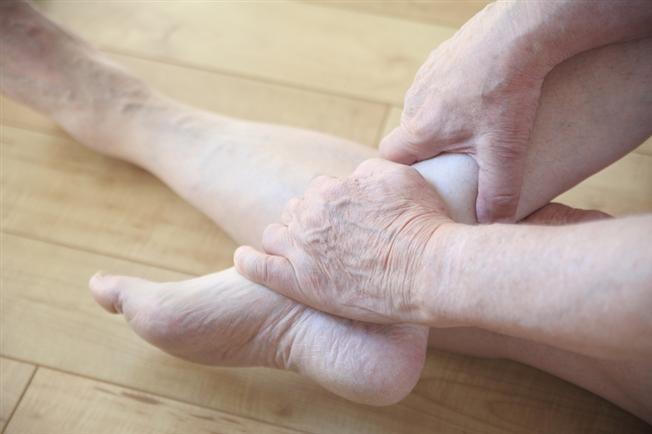Exploring your options for peripheral artery disease

Your toes tingle, your legs cramp, but the moment you rest, the sensation subsides. These symptoms may be a sign of poor circulation and might be cause for concern.
Peripheral artery disease (PAD), also called peripheral vascular disease, is a common circulatory condition in which narrowed blood vessels reduce blood flow to the limbs. Although there are other symptoms, leg pain is the most common symptom of PAD, particularly when walking. PAD is a result of fatty deposits and calcium building up along the artery walls, which decreases circulation, making your heart work harder and increasing the risk of heart attack and stroke.
However, there is hope for those afflicted; PAD is a treatable condition.
"Treatment doesn’t always mean surgery and can be as simple as making lifestyle change," explains Dr. Sarang Mangalmurti, interventional cardiologist with the Lankenau Heart Institute at Bryn Mawr Hospital, part of Main Line Health.
If you have PAD, one of the first things your doctor might recommend are lifestyle change such as exercise, physical activity, a heart healthy diet and quitting smoking which can help prevent or delay the effects of PAD. Medication is available to treat PAD to ease pain, lower unhealthy cholesterol and prevent clots.
However, in some severe cases, medication and lifestyle changes may not be enough to control PAD. There are a variety of surgical options to return blood flow to where there is currently a blockage.
Permanent relief for PAD
A balloon angioplasty—a common procedure for severe PAD—widens blocked arteries, restoring blood flow. In this procedure, a thin catheter tube with a balloon tip is inserted into the blockage. The balloon inflates, compressing the arterial plaque against the artery wall, widening the vessel to increase circulation. Frequently, before the balloon is inflated, a small cutting device is inserted into the blocked artery and the plaque is shaved down to improve the results of this procedure. When necessary, a medicated stent may be placed to keep the vessel open long term.
While balloon angioplasties have long been considered a go-to treatment for patients with PAD, a new treatment method offers better results and less pain. In August 2017, Bryn Mawr Hospital became the first hospital in the Philadelphia region to offer Shockwave Medical’s Lithoplasty technology for the treatment of PAD.
The Lithoplasty system integrates balloon catheter devices, like those used in angioplasty, with sonic pressure waves to create a series of micro-fractures that disrupt plaque inside blocked blood vessels.
“Bryn Mawr Hospital is proud to be the first in the region to offer this technology, because it gives us the ability to more effectively treat hardened calcium with potentially less risk of damage or injury to the affected vessels,” says Dr. Mangalmurti.
For severe PAD when angioplasty is not an option, bypass surgery is required. This procedure employs a prosthetic tube or a blood vessel grafted from another part of the body inserted to bypass the blockage, allowing blood to circulate around the affected area. Bypass surgery does not cure PAD; rather, it gives blood a secondary channel to flow through, bypassing the blockage.
"There are many options for treating PAD," explains Dr. Mangalmurti. "But limiting risks like smoking and taking control of your blood pressure and cholesterol through a heart healthy diet and exercise can help patients manage their symptoms. Depending on the severity of your symptoms, your doctor can help determine the right treatment option for you."
With four hospitals and many community cardiology sites throughout the region, Lankenau Heart Institute’s team of cardiologists, cardiovascular surgeons and sub-specialists seamlessly integrate prevention, diagnostics, treatment, rehabilitation and disease management into one uncompromising service. Visit our website to learn more about the Lankenau Heart Institute.
 Content you want, delivered to your inbox
Content you want, delivered to your inbox
Want to get the latest health and wellness articles delivered right to your inbox?
Subscribe to the Well Ahead Newsletter.
